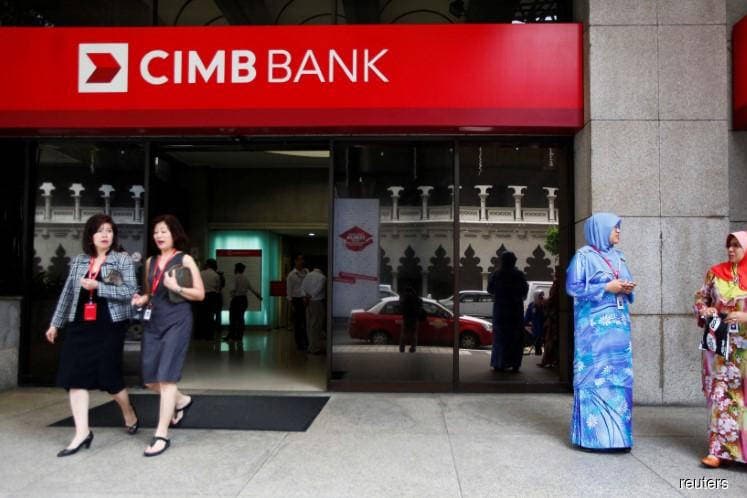
This article first appeared in The Edge Malaysia Weekly on February 10, 2020 - February 16, 2020
MALAYSIA will soon allow e-KYC (electronic Know Your Customer) for banks as financial institutions delve deeper into digital banking and look to onboard customers via online or mobile channels.
In a nutshell, e-KYC is the online process of verifying the identity of customers and assessing the risks or possible illegal intentions during each transaction — whether it be opening or logging onto an account, applying for a loan or making a payment. With e-KYC, consumers no longer have to go to a bank branch to open a savings or current account.
Bank Negara Malaysia, which issued an exposure draft on e-KYC on Dec 16 last year, is currently seeking the industry’s feedback on its proposed requirements and guidance for e-KYC implementation. Banks, insurers, money changers and remittance players, as well as approved non-bank issuers of designated payment instruments, have until Feb 17 to provide feedback.
“Once Bank Negara’s policy document is formalised, I think that is where the players, including banks, will officially be able to roll out their own online identity verification services,” technology firm Jumio Corp’s vice-president of Asia-Pacific Frederic Ho tells The Edge in an interview.
US-based Jumio uses artificial intelligence (AI) and machine learning to provide verification and authentication solutions to various industries, including banking.
Last week, Jumio announced that it had partnered with CIMB Group Holdings Bhd’s subsidiary in the Philippines, CIMB Bank Philippines Inc, on the digital onboarding front. CIMB Bank PH, which opened in December 2018, is an all-digital, mobile-first bank.
“Jumio’s identity verification solution uses machine learning, AI, certified liveness detection and face-based biometrics to ensure the person behind a digital transaction is who they say they are, by matching a user’s live selfie with the photo shown on their government-issued ID,” Ho, who is based in Singapore, says. He declines to disclose the value of the contract with CIMB Bank PH.
According to him, what used to take 15 minutes with a video KYC process now takes less than five, resulting in an increase in conversions. In the bank’s first full year of formal operations, it signed up almost two million Filipinos via the CIMB Bank PH digital platform — 30% of whom are first-time bankers — making it the fastest growing all-digital bank in the Philippines and Asean.
Apart from CIMB Bank PH, Jumio’s clients in the Asia Pacific include HSBC Hong Kong. In Malaysia, they include money-transfer fintech TransferWise.
According to Ho, e-KYC is increasingly what consumers want as it spells convenience, especially given skyrocketing mobile phone adoption in Asia-Pacific. However, it also poses risks for banks and the banking system, which is why regulators need to keep a close eye on its implementation.
In a report last June, Jumio highlighted that while 58% of all digital transactions originate from mobile devices worldwide, one-third of all fraud attempts now target this channel.
“Earlier, it was the fintechs but, now, it is also banks that are coming in to do digital onboarding [of customers]. So, that really up-ends the whole policy landscape, where regulators need to get involved. They need to understand the risks, [but] they also want to ensure that whatever rules they set in place will help promote the local companies as well, to give them that leverage to really compete locally as well as regionally and globally if they want,” says Ho.
The support for local banks and fintechs comes as foreign financial giants like Alipay and WeChat move quickly into new markets and dominate the payment and remittance space.
In Thailand, just last week, the central bank launched a pilot programme using facial recognition technology for digital account opening at six commercial banks, including CIMB Thai Bank.
Over in Malaysia, Bank Negara’s focus on e-KYC comes as it looks to issue up to five digital bank — those with no physical branches — licences to qualified applicants.
Most regulators, including Bank Negara, want digital banks to focus on the underserved and unserved market segments. But how do banks ensure such customers are bankable, given that some may not have a credit history that banks can check against?
“For that, banks will apply their own logic. Most banks will have a cap on the value of transactions. With time, they may increase it as they get to know the customer. But the whole point is, you need to onboard them before some other bank does,” says Ho.
A point that Ho emphasises is that the fight for banks, much like e-wallet companies, is in customer acquisition.
“The fight now is in the acquisition … because, once a customer is already with you, especially if he is a millennial, you can do a lot of things with him over time. Hence, you need to be competitive in customer onboarding. When a customer has several digital banks to choose from, he will sign up with the one that gives him the easiest experience. We notice that a lot of companies focus on complying with regulations, which is great, but they do not pay enough attention to the whole user experience — but that is where the fight is for the business,” he says.
He says Bank Negara’s proposed requirements are pretty consistent with those of other regulators. Among others, it proposes that a financial institution must ensure that the overall False Acceptance Rate — or instances that the system incorrectly verifies an individual — does not exceed 5%.
Save by subscribing to us for your print and/or digital copy.
P/S: The Edge is also available on Apple's AppStore and Androids' Google Play.